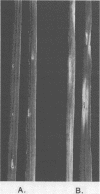Abstract
Xanthomonas campestris pv. translucens is the causal agent of bacterial leaf streak of cereal grains and grasses, and individual strains within the pathovar differ in their host range among the cereals. Coinoculation of a wide-host-range and a narrow-host-range strain resulted in the wide-host-range reaction. Transposon and chemical mutagenesis of the wide-host-range strain Xct4, pathogenic on barley, wheat, rye, and triticale, resulted in variants with reduced host range. When pathogenicity was inactivated independently for barley, wheat, triticale, and rye, wild-type symptoms were retained on the other members in the host range. Testing of some host range mutants on additional varieties of the cereals indicated some cultivar specificity. In addition, mutants nonpathogenic on combinations of the hosts or on all hosts were isolated. This suggests that there are independent positive factors determining host range in this species, rather than an avirulence gene system such as those determining race specificity in other plant pathogens.
Full text
PDF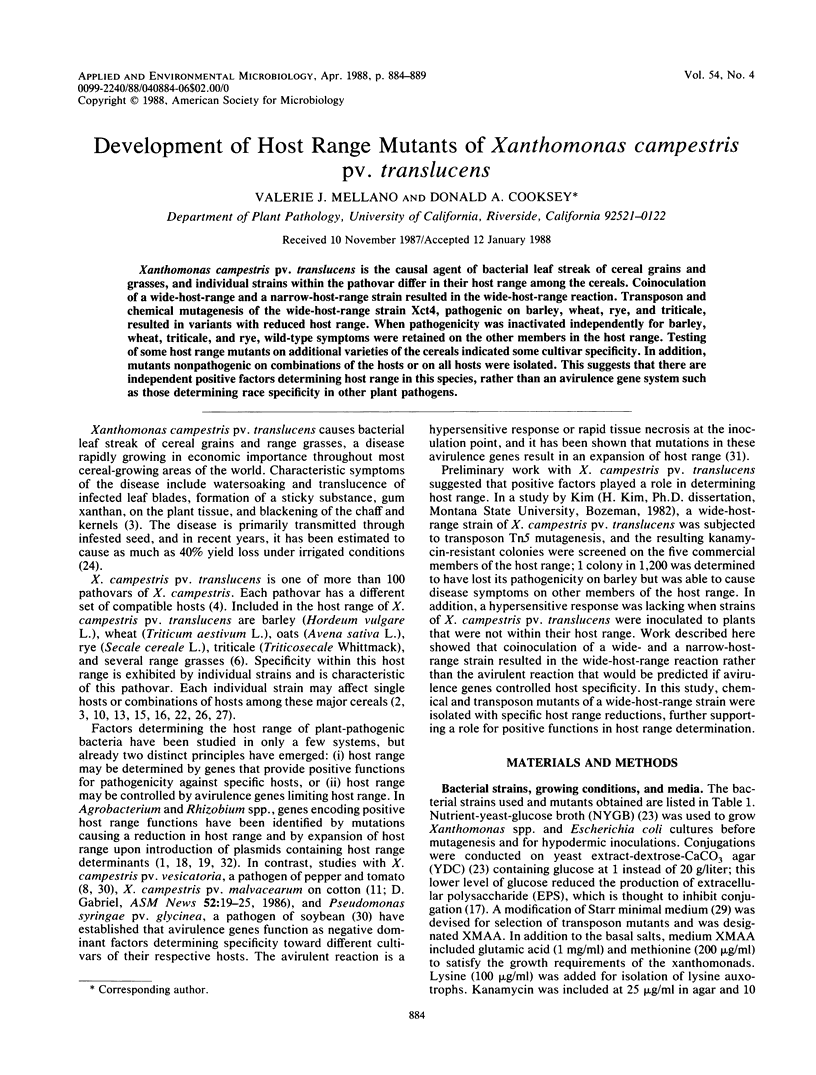
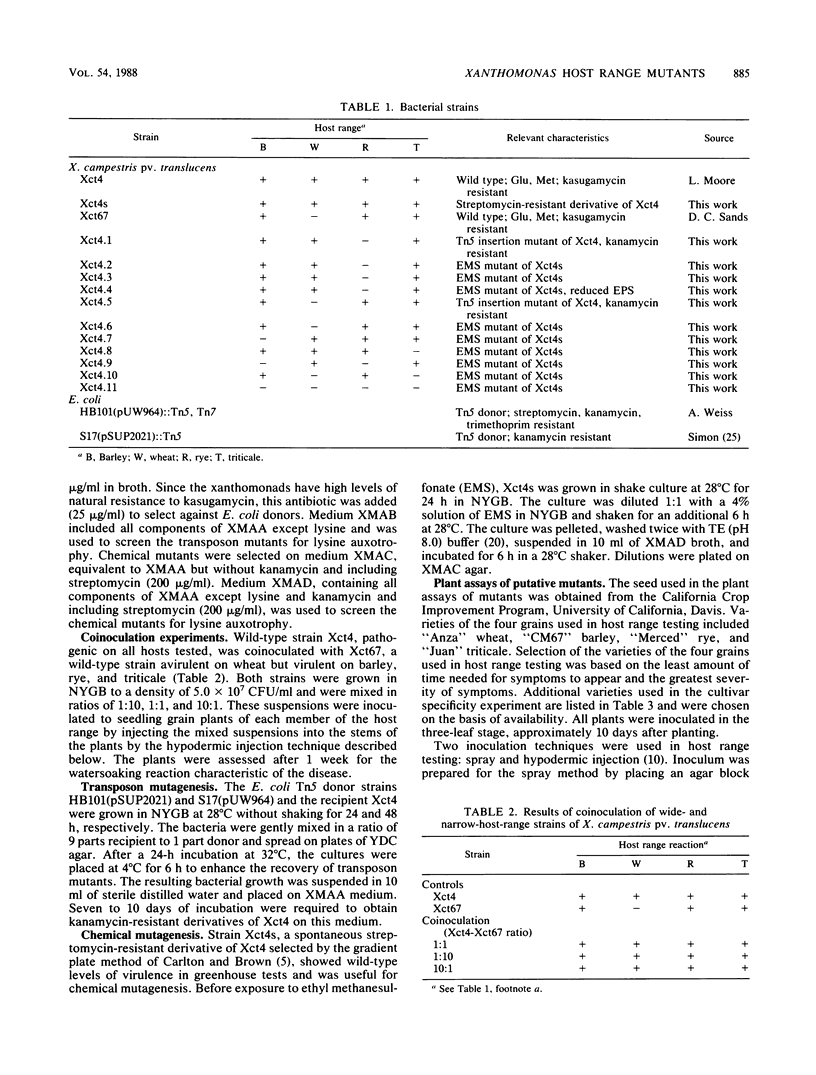
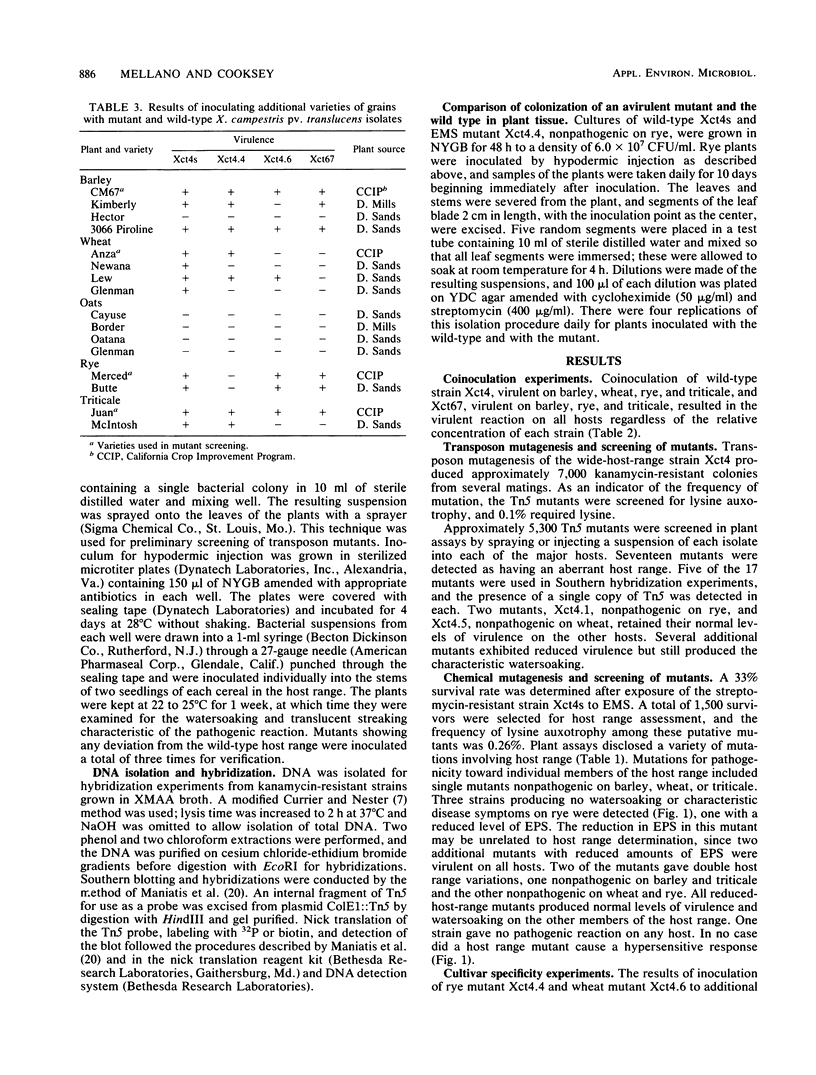
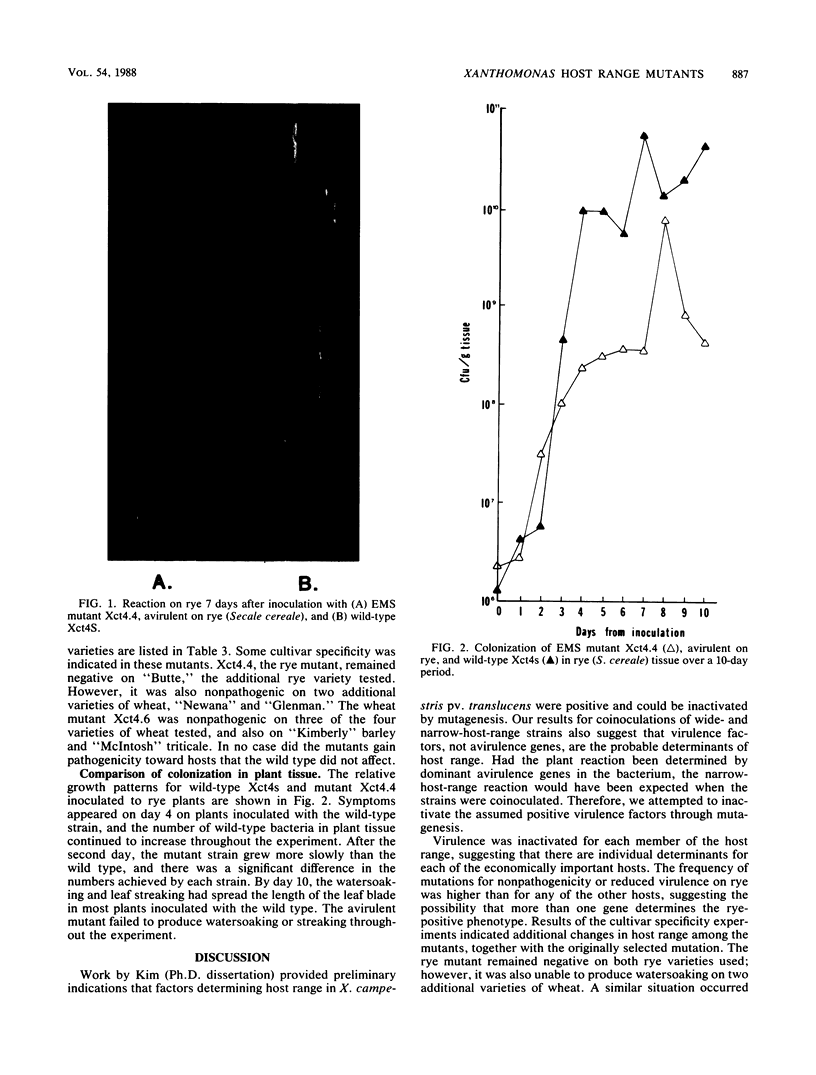
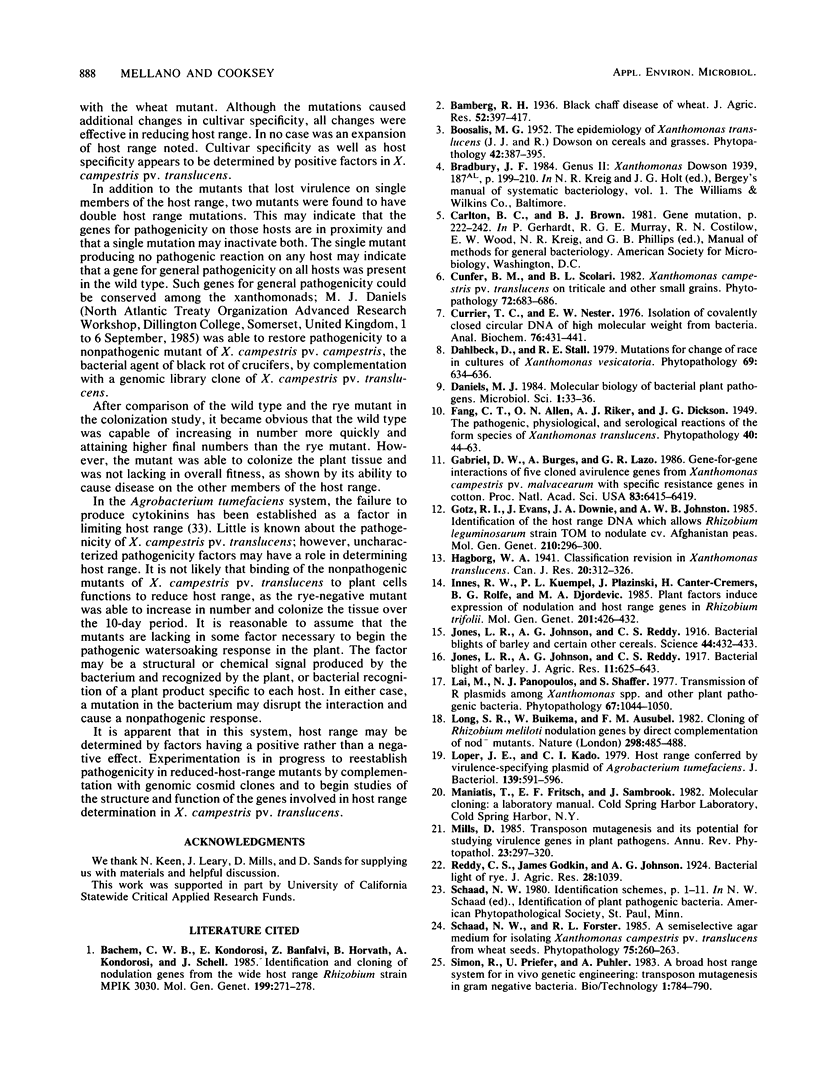
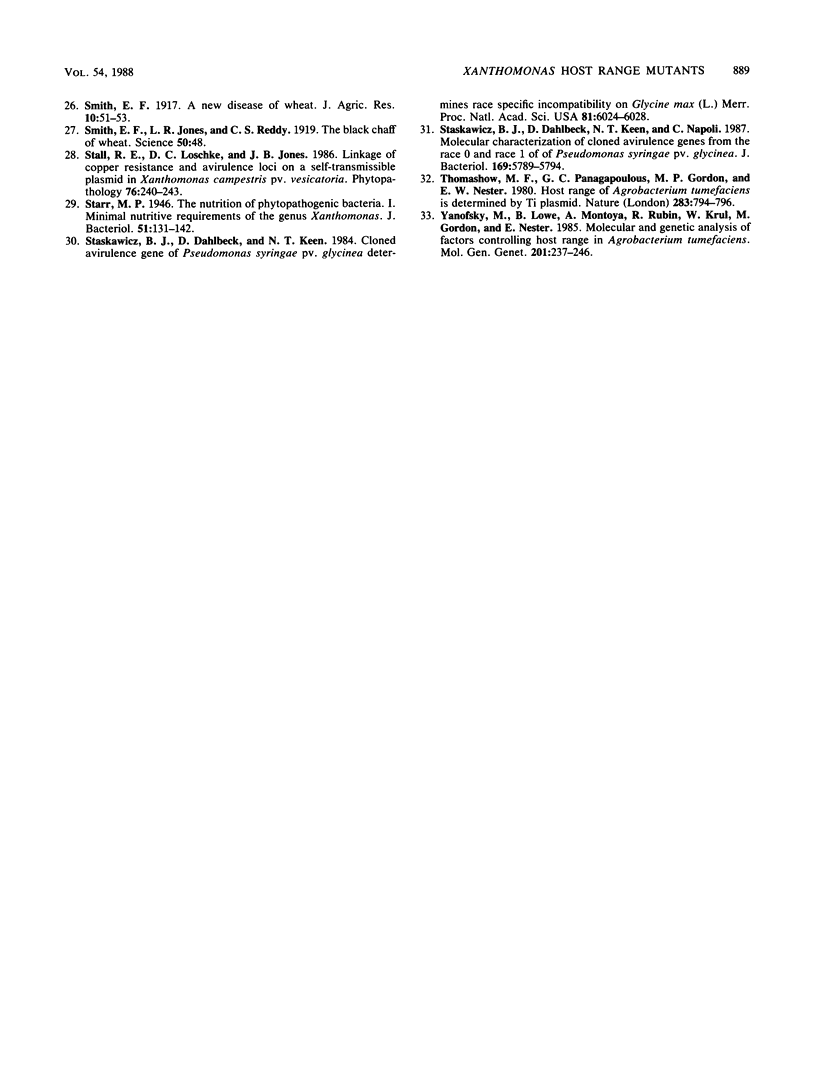
Images in this article
Selected References
These references are in PubMed. This may not be the complete list of references from this article.
- Currier T. C., Nester E. W. Isolation of covalently closed circular DNA of high molecular weight from bacteria. Anal Biochem. 1976 Dec;76(2):431–441. doi: 10.1016/0003-2697(76)90338-9. [DOI] [PubMed] [Google Scholar]
- Daniels M. J. Molecular biology of bacterial plant pathogens. Microbiol Sci. 1984 May;1(2):33–36. [PubMed] [Google Scholar]
- Gabriel D. W., Burges A., Lazo G. R. Gene-for-gene interactions of five cloned avirulence genes from Xanthomonas campestris pv. malvacearum with specific resistance genes in cotton. Proc Natl Acad Sci U S A. 1986 Sep;83(17):6415–6419. doi: 10.1073/pnas.83.17.6415. [DOI] [PMC free article] [PubMed] [Google Scholar]
- Jones L. R., Johnson A. G., Reddy C. S. BACTERIAL BLIGHTS OF BARLEY AND CERTAIN OTHER CEREALS. Science. 1916 Sep 22;44(1134):432–433. doi: 10.1126/science.44.1134.432. [DOI] [PubMed] [Google Scholar]
- Loper J. E., Kado C. I. Host range conferred by the virulence-specifying plasmid of Agrobacterium tumefaciens. J Bacteriol. 1979 Aug;139(2):591–596. doi: 10.1128/jb.139.2.591-596.1979. [DOI] [PMC free article] [PubMed] [Google Scholar]
- Smith E. F., Jones L. R., Reddy C. S. THE BLACK CHAFF OF WHEAT. Science. 1919 Jul 11;50(1280):48–48. doi: 10.1126/science.50.1280.48. [DOI] [PubMed] [Google Scholar]
- Smith L. DISCUSSION ON THE AETIOLOGY AND TREATMENT OF IRITIS. Proc R Soc Med. 1917;10(SECT):51–53. doi: 10.1177/003591571701001616. [DOI] [PMC free article] [PubMed] [Google Scholar]
- Starr M. P. Nutrition of Phytopathogenic Bacteria: I. Minimal Nutritive Requirements of Genus Xanthomonas. J Bacteriol. 1946 Feb;51(2):131–143. [PMC free article] [PubMed] [Google Scholar]
- Staskawicz B. J., Dahlbeck D., Keen N. T. Cloned avirulence gene of Pseudomonas syringae pv. glycinea determines race-specific incompatibility on Glycine max (L.) Merr. Proc Natl Acad Sci U S A. 1984 Oct;81(19):6024–6028. doi: 10.1073/pnas.81.19.6024. [DOI] [PMC free article] [PubMed] [Google Scholar]
- Staskawicz B., Dahlbeck D., Keen N., Napoli C. Molecular characterization of cloned avirulence genes from race 0 and race 1 of Pseudomonas syringae pv. glycinea. J Bacteriol. 1987 Dec;169(12):5789–5794. doi: 10.1128/jb.169.12.5789-5794.1987. [DOI] [PMC free article] [PubMed] [Google Scholar]
- Story D. L., Shrader R. E., Theriault L. L., Lumijarvi D. L., Shenoy T. S., Savaiano D. A., Shaffer R. H., Ho C. Y., Clifford A. J. Effects of dietary protein, adenine, and allopurinol on growth and metabolism of rats. J Nutr. 1977 Jun;107(6):1044–1052. doi: 10.1093/jn/107.6.1044. [DOI] [PubMed] [Google Scholar]



